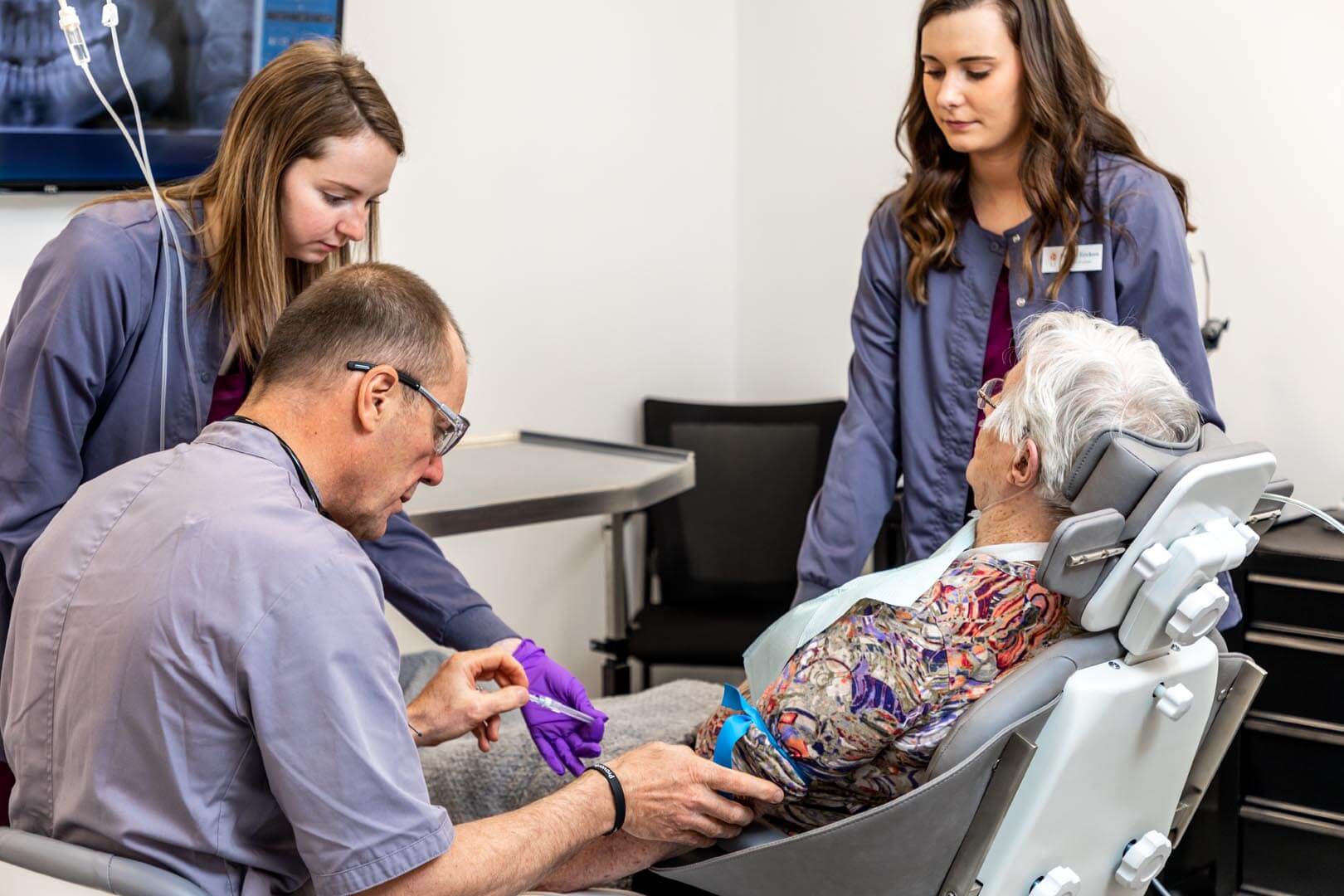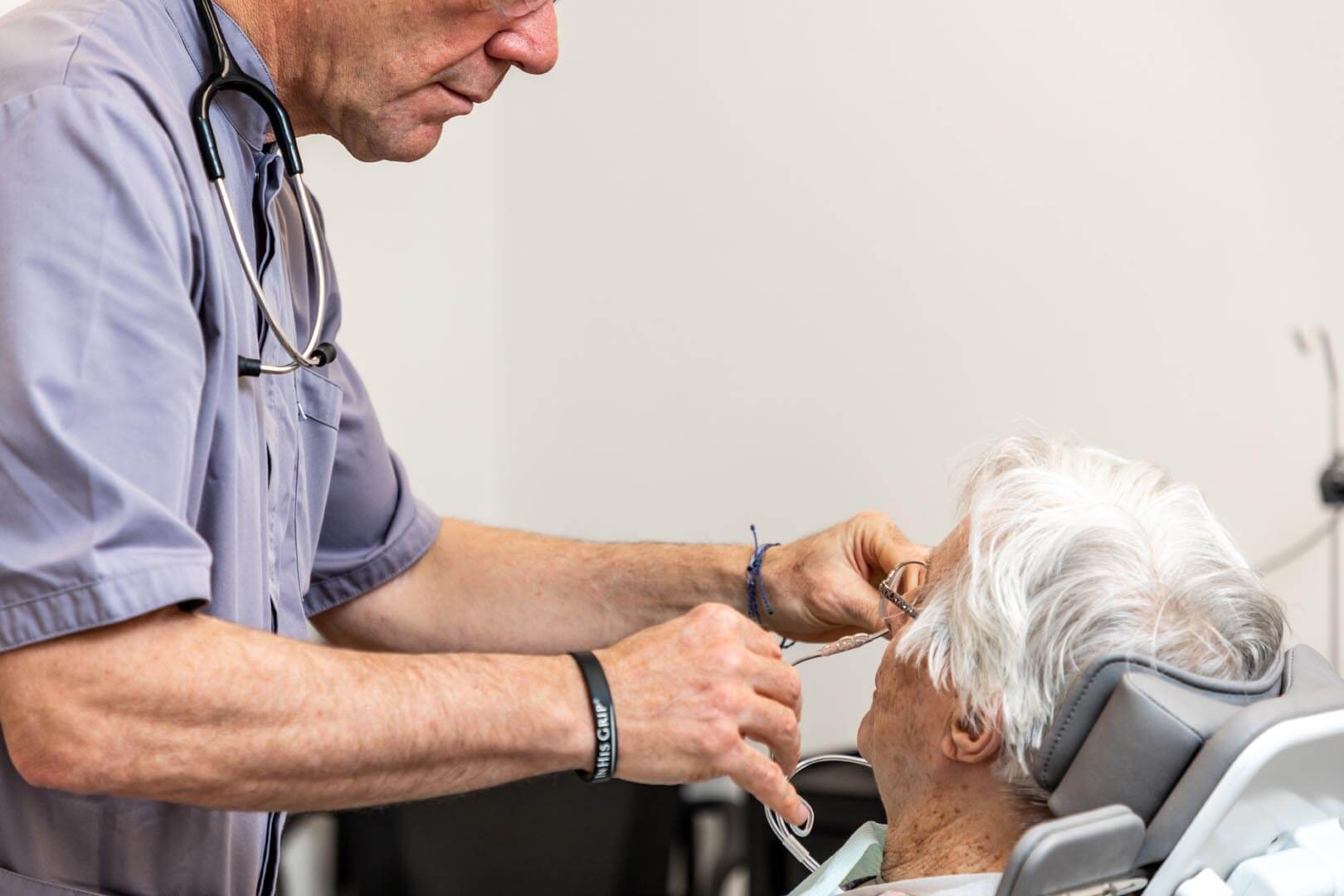
Oral and maxillofacial surgeons (OMSs) are trained in all aspects of anesthesia administration. Following dental school, they complete at least four years of training in a hospital-based surgical residency program alongside medical residents in general surgery, anesthesia and other specialties. During this time, OMS residents evaluate patients for anesthesia, deliver the anesthetic and monitor post-anesthetic patients during the medical anesthesiology service.
Extensive Training and Experience
As a result of their extensive training, every oral and maxillofacial surgeon is well-prepared to appropriately administer local anesthesia, all forms of sedation and general anesthesia. OMSs are experienced in airway management, endotracheal intubation, establishing and maintaining intravenous lines as well as managing complications and emergencies that may arise during the administration of anesthesia.
Before your surgery, your OMS will review the type of anesthetic to be used as well as the way you’re likely to feel during and after the operation. This is the time to discuss any concerns you may have about any facet of the operation. Usually, patients describe their feelings during surgery as comfortable and surprisingly pleasant. After surgery, you may be prescribed a medication to make you as comfortable as possible when you get home.

Types of Oral Surgery Anesthesia
Oral and maxillofacial surgeons train extensively in the pursuit of their degrees, including working side-by-side with anesthesiologists, to offer a range of anesthesia options in their practices. Different procedures might require different levels of anesthesia, from local anesthesia to general anesthesia. Patients should learn about each of these types and discuss anesthesia options with their OMS before surgery.
General Anesthesia*
This is the type of anesthesia we use for the majority of our procedures.
The combination of medications used to put patients to “sleep” before surgery or another medical procedure is called general anesthesia. Under this type of anesthesia, patients are completely unconscious, though it will likely feel as if simply going to sleep to the patient. The key difference is the patient doesn’t respond to reflexes or pain signals.
Local Anesthesia
Local anesthetics are those that affect only a small portion of the body. They work locally to numb the area and ensure the patient doesn’t feel any pain. Lidocaine is a common numbing medication that is injected directly into the affected area and takes effect quickly.
Patients are conscious and aware during local anesthesia, but should not feel any discomfort. It is typically used in simple tooth extractions.
Minimal Sedation
This method of anesthesia combines the localization of an anesthetic with the calming effects of nitrous oxide (also known as “laughing gas”). A mixture of nitrous oxide and oxygen is breathed through a mask or nosepiece, allowing a patient to be aware during the procedure while remaining relaxed. This method also may include a sedative agent. Patients with anxiety about dental care might prefer this type of anesthesia for simple procedures. It also is an option for more involved procedures, such as placement of dental implants or removal of wisdom teeth.
Moderate Sedation
Sometimes referred to as “twilight sedation,” intravenous (IV) moderate sedation places a patient in a state between awake and asleep, drifting in and out of consciousness. Although patients are partially conscious, few remember anything from the procedure other than feeling sleepy and relaxed. Moderate sedation often can be used instead of minimal sedation for procedures such as removal of impacted wisdom teeth.
Moderate sedation may use the same types of medication as general anesthesia, and generally leads to a quick recovery from sedation and a minimization of anesthesia side effects.
Deep Sedation
This level of sedation is a drug-induced depression of consciousness during which a patient cannot be easily aroused but can respond to repeated stimulation.
Learn More from an Oral and Maxillofacial Surgeon
Ultimately, the OMS will determine the best anesthetic option for each patient as the types of anesthesia used can vary from person to person and procedure to procedure. It is important to find a local OMS to discuss options and go over potential anesthesia side effects.
Call to Schedule Your Consultation Now
Schedule an appointment today. Don't worry, we'll take care of you like family.
